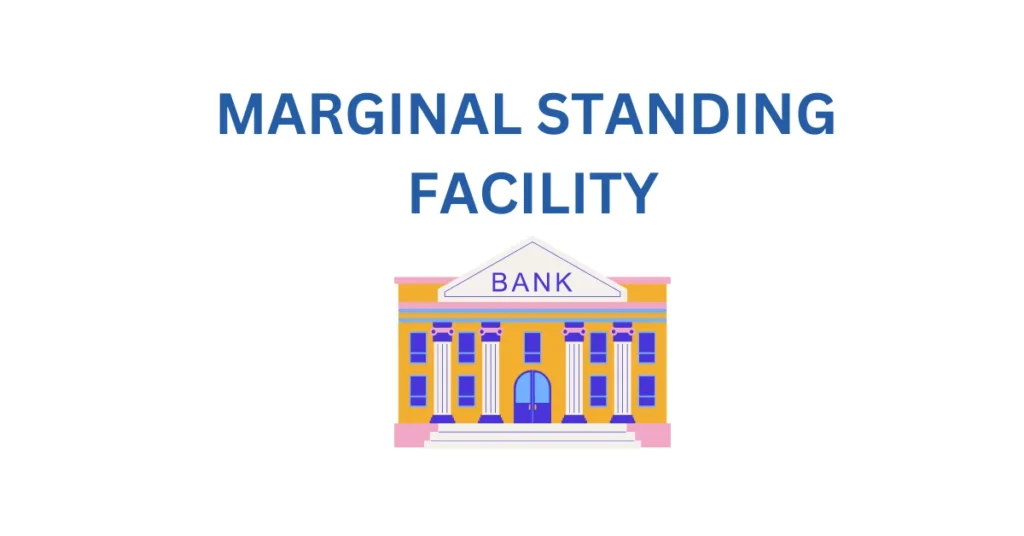The banks in India has made some changes to the rules about taking leave in bank for employees and officers. These changes were made as per the 12th Bipartite Settlement/9th Joint Note, which was updated on March 8, 2024.
NEW LEAVE RULES IN BANK
Here’s what you need to know about when you can take different types of leave, as per new rules.
Casual Leave:
This is leave that you can take for personal reasons, like attending to urgent matters or for rest and relaxation. You are eligible for this leave as per the updated rules.
Unavailed Casual Leave:
If you haven’t used up all your casual leave, you may be able to carry it forward to use later.
Special Casual Leave:
This leave may be granted for specific reasons, like attending a family function or dealing with personal matters.
Privilege Leave:
This is earned leave that you can take for planned vacations or other personal reasons.
Sick Leave:
If you’re unwell, you can take sick leave to rest and recover. The updated rules cover this type of leave.
Additional Sick Leave:
In certain cases, you may be granted extra sick leave beyond your regular entitlement.
Maternity Leave:
Expectant mothers are entitled to time off before and after childbirth to take care of themselves and their new-borns.
Paternity Leave:
Fathers may be eligible for time off when their child is born or adopted.
Bereavement Leave:
If you experience the loss of a family member, you can take bereavement leave to attend to funeral arrangements and grieve.
Special Leave:
This leave may be granted for unique situations not covered by other types of leave.
Special Leave for Sports Events/Trekking Programs:
If you are participating in sports events or trekking programs, you may be eligible for special leave.
Leave for Sterilization Operation:
Individuals undergoing sterilization for family planning purposes may be granted leave.
Extraordinary Leave:
In exceptional circumstances, you may be granted leave beyond your regular entitlement.
Sabbatical Leave (Govt.) Scheme for Women:
Women may be eligible for a sabbatical leave scheme offered by the government.
These rules have been updated in accordance with the 12th Bipartite Settlement/9th Joint Note issued on March 8, 2024.
This article explains the rules for taking casual leave, unavailed casual leave, special casual leave, and bereavement leave.
CASUAL LEAVE
Employees of the bank, including both officers and permanent parttime staff, are entitled to 12 days of casual leave each year.
During this time off, they receive full pay and allowances as if they were working. However, they can only take a maximum of 4 days of casual leave at once.
When taking casual leave, any holidays or days off that fall before or after the leave period won’t count as part of the leave.
But, if an employee wants to include holidays that are not on Saturdays or Sundays as part of their casual leave, they need to get permission from their supervisor beforehand.
Previously, there was a limit of 6 days of absence, including holidays, for award staff members, but this restriction has been removed under the 10th Bipartite Settlement.
Employees cannot mix casual leave with other types of leave like privilege leave, sick leave, unavailed casual leave, or any other kind of leave. Each type of leave needs to be taken separately.
Employees can take a total of 2 days of casual leave for half a day on 4 occasions in a year. Out of these, 2 occasions can be in the morning and 2 in the afternoon.
To take casual leave in this category, employees need to apply at least 24 hours in advance.
When carrying over the balance of casual leave to unavailed casual leave, any fraction in the balance will be ignored.
CONDITIONS FOR GETTING CASUAL LEAVE
Casual leave is added to employees leave accounts at the start of the financial year. But, in the first year of service, employees earn casual leave on a prorata basis.
Leave cannot be taken for granted. It may be refused if it causes trouble to the public or administration, and if the work can’t be managed by others.
Employees must get permission from their Branch Manager or higher authority before taking leave. If prior permission isn’t possible, they should at least inform the higher authority through the quickest means possible.
Leave application must be submitted on the day the employee returns to work.
If an employee stays on leave longer than planned for genuine reasons, the extra time off can be deducted from their privilege leave or sick leave, but only if they provide a medical certificate.
Leave isn’t a guaranteed right. Management can refuse leave or call employees back to work if necessary.
If an employee is absent for trivial reasons, the entire period of absence, including casual leave, can be considered as unpaid leave by the management.
SPECIAL CASUAL LEAVE
Employees who give blood to a recognized blood bank or a blood donation event arranged by the bank can get special casual leave for one day on the day they donate blood. They need to show proper proof to get this leave.
UNAVAILED CASUAL LEAVE (UCL)
Casual leave not taken in a calendar year can be converted into unavailed casual leave (UCL) with full pay, except during the first year. However, UCL can only be used for reasons of sickness. ‘
Clerical and substaff can accumulate unused casual leave for any number of years without any limit and can use it for medical reasons in the future.
If casual leave is not taken in the current year or the following year, it will expire after five years.
Starting from November 1, 2020, officers can still take UCL in the following years for medical reasons, but they no longer need to provide a medical certificate if the UCL period does not exceed four days.
Unused casual leave can also be taken along with any other leave except casual leave.
BEREAVEMENT LEAVE
When an employee’s family member (like a spouse, child, parent, or parentinlaw) passes away, the employee will be given bereavement leave. Each bank will decide how many days of leave to give for this.
Any holidays in between will be counted as part of the leave. Bereavement leave must be taken within 15 days of the family member’s passing. This leave won’t be counted as “active service” when calculating privilege leave.
PRIVILEGE LEAVE
Bank officers and employees, including permanent parttime workers, can earn Privilege Leave (PL) at a rate of one day for every 11 days of active work.
They get full pay and allowances as if they were working. When counting the days of active service for PL, all types of leave except Casual Leave (CL) are not included.
CONDITIONS FOR TAKING PL
When calculating PL, all types of leave taken (except CL and mandatory leave) will be counted.
Employees need to give a 10day notice to take PL (previously it was 15 days). Starting from 2020, employees can also encash PL for 5 days every calendar year (7 days for employees/officers aged 55 and above) along with retirement and during Leave Fare Concession (LFC).
Normally, employees take PL up to 4 times a year, with each occasion possibly being just a single day (known as domestic PL).
If an employee needs to take PL more than 4 times a year for genuine reasons that won’t cause administrative issues, the authority can approve it.
PL can be taken for a maximum of 30 days at a time. Officers can take PL only after completing 11 months of service.
PL requests should be submitted at least 15 days before the proposed start date. PL for medical reasons can be granted for more than 4 days with a medical certificate, and these days won’t count towards the 4 occasions mentioned earlier.
The top leaders of national workmen unions, officers’ unions, or associations can get special leave for up to 25 days each year.
They don’t need to give a 10day notice to take privilege leave if they’re office bearers or executive committee members of a registered trade union.
Officers who are defending themselves in departmental inquiry proceedings can get one day of special leave to prepare their defence.
They can take this special leave up to ten times a year. The rule about how many times you can take privilege leave mentioned earlier doesn’t apply to executive committee members of registered trade unions.
They can take privilege leave as many times as they need for union work, as long as they have enough leave days left.
They can save up to 270 days of privilege leave, but when they retire, they can only cash in 240 days’ worth. When counting how many times they’ve taken privilege leave, we don’t include:
i. When they take privilege leave because they’re sick, as long as they take more than 4 days off at once and provide a medical certificate (for Award Staff/Permanent parttime employees).
ii. For officers, even one day of privilege leave taken for medical reasons.
iii. When executive committee members of registered trade unions take privilege leave for union work if they have enough leave days left.
iv. When they take privilege leave or Leave Fare Concession (LFC), it’s considered domestic leave. They can add Sundays and holidays before or after their privilege leave, but the Sundays and holidays in between count as part of their leave.
- Employees can choose to cash in one day of their privilege leave and donate the money to the Prime Minister’s relief fund.
- They just need to write a letter to the bank, giving permission to send the money to the fund. The leave they cash in won’t be taken away from their total leave days.
b) All staff members can cash in up to 30 days of their privilege leave when they take Leave Fare Concession (LFC) once every four years.
c) When employees retire, they can cash in their unused privilege leave, but they can only cash in up to 255 days’ worth.
d) If staff members resign, they can cash in 50% of their unused privilege leave, but they can only cash in up to 120 days’ worth.
e) If an employee dies while working, their family will get paid for the leave days they hadn’t used, but they can only get paid for up to 255 days’ worth.
When employees take leave because they’re sick and they don’t have any sick leave left, it won’t count as using up their privilege leave days.
Employees, including permanent parttime ones, and officers of the bank who go on maternity leave will get their full pay.
Female employees can take up to 6 months of maternity leave with full pay each time, up to a maximum of 12 months during their whole time working.
They can even take maternity leave in their first year of working, but their probation period will be extended. They can take maternity leave before and after having a baby, or if they have a miscarriage or abortion, as long as they provide a medical certificate.
They can take up to 6 weeks of maternity leave for each miscarriage or abortion. If they need any other kind of leave during or after maternity leave, they can ask for it as long as they provide a medical certificate. Maternity leave is counted month by month.
MATERNITY LEAVE
Maternity leave (ML) is given to female employees with their full pay usually for 6 months each time and up to 12 months during their whole time working. They can take maternity leave on its own or with other types of leave.
If a female employee has more than 2 children in one birth, she can take maternity leave for up to 12 months. If she has twins, she can take maternity leave for 8 months.
A female employee can take maternity leave once for up to 9 months if she legally adopts a child who is younger than one year, as long as everything else stays the same.
Maternity leave can also be given for In vitro fertility (IVF) treatment, but only for up to 12 months, and she needs to show a medical certificate.
SPECIAL MATERNITY LEAVE
In case of a stillborn baby or if the baby passes away within 28 days of birth, special maternity leave of up to 60 days will be given.
If a woman needs a Hysterectomy operation after her regular maternity leave is finished, she will get an extra two months of leave with pay.
Within the 12month limit of regular maternity leave, she can also take six weeks of leave for things like miscarriage, abortion, or medical termination of pregnancy (MTP), and if necessary, she can take up to six more months.
Maternity leave for adopting a child legally is 9 months.
If a woman gives birth to twins, she can take 8 months of maternity leave.
Within 12 months, she can also get 30 days of leave if she needs to be hospitalized for a specific health issue, as long as she shows a certificate from the hospital.
Leave for Legally Adopting a Child:
A female employee who doesn’t have children can get leave once during her time working to legally adopt a child who is younger than one year. She can take leave for up to nine months for this. Here are the conditions:
1) She can only adopt one child.
2) The adoption must be done through the proper legal process, and she needs to show the adoption papers to the bank.
3) Even parttime employees can get leave for adoption.
4) This leave is also available to biological mothers if they have a child through surrogacy.
5) The leave must be taken within her overall entitlement of 12 months during her entire time working.
Paternity Leave for Wife’s Delivery:
Starting from June 1, 2015, male employees with fewer than two children can get 15 days of paternity leave when their wife gives birth.
This leave can be combined with other types of leave except casual leave. It can be taken up to 15 days before the delivery or within 6 months after the delivery. This leave is also allowed for legally adopting a child.







